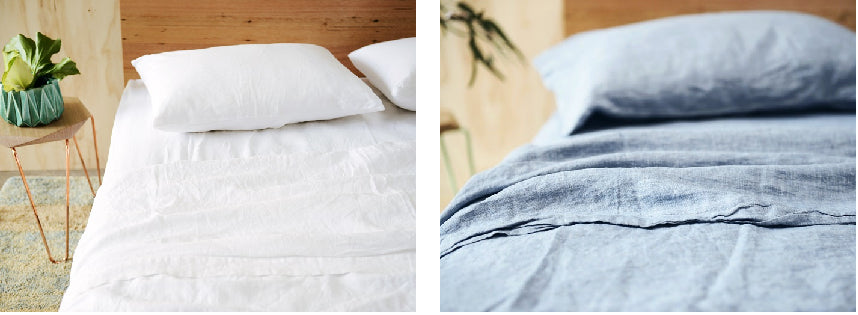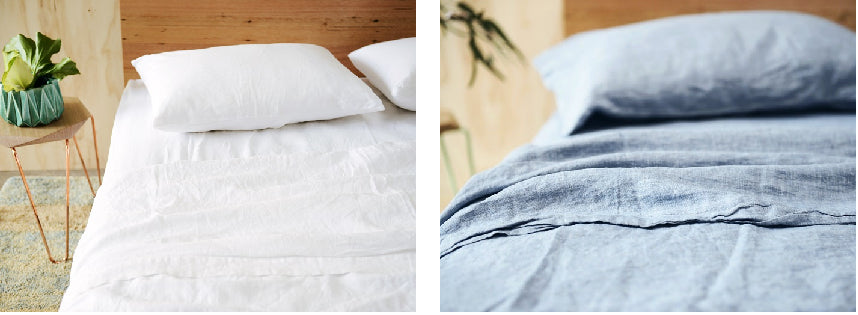
Why should I buy French linen?
Posted: 22 January 2016
Linen bedding is considered to be some of the most luxurious bedding available – often sought out by celebrities, stylists, designers and luxury accommodations.
Why does everyone love linen and what kind of linen should I buy?
Linen bedding is considered to be some of the most luxurious bedding available – often sought out by celebrities, stylists, designers and luxury accommodations. So how has it developed this reputation and is it worth making the switch?


So many advantages to sleeping on linen bedding
The flax plant has amazing properties, and when woven into fabric it has the ability to filter and ventilate against moisture and bacteria making it anti-allergenic bedding. Amazingly, linen can absorb up to 20% of its own weight before it even starts to feel wet, which is why it always feels cool and crisp to the touch and so delightful to sleep on and under.
Often customers will contact us to let us know they will never go back to cotton again now that they have tried linen they are converted; it’s a common refrain and if you’re already familiar with how it feels to sleep on linen sheets you will know that delicious feeling of slipping into bed with that cool, crisp, textured yet soft feeling on your skin.
Always know where the flax is from
Several countries all over the world produce flax, and not all quality is the same. Look for flax made in Europe; France and Belgium are always indicators of high grade grown and processed flax for your bedding. Our design team has carefully sourced linen fabric woven from certified high grade French flax.
What is linen made from?
Linen is spun from the flax plant, which has very unique properties in that it creates a fabric that feels cool and crisp even on very hot nights. This is due to the flax plant being a wonderful conductor of air flow, creating a fabric that regulates heat incredibly well.
The flax plant flourishes in cool, moist climates and it is a very complicated and painstaking process to take the raw flax plant into fabric ready to be enjoyed and slept on.
History
As one of the oldest cultivated fibres in the world, flax has been cultivated and woven for at least 5000 years and the spinning and weaving of linen has been depicted on wall paintings in Ancient Egypt. Used throughout the Middle East for thousands of years, it’s thought that canny traders from Finland introduced the use of linen to Northern Europe, and it spread quickly into being cultivated for hundreds of years.

